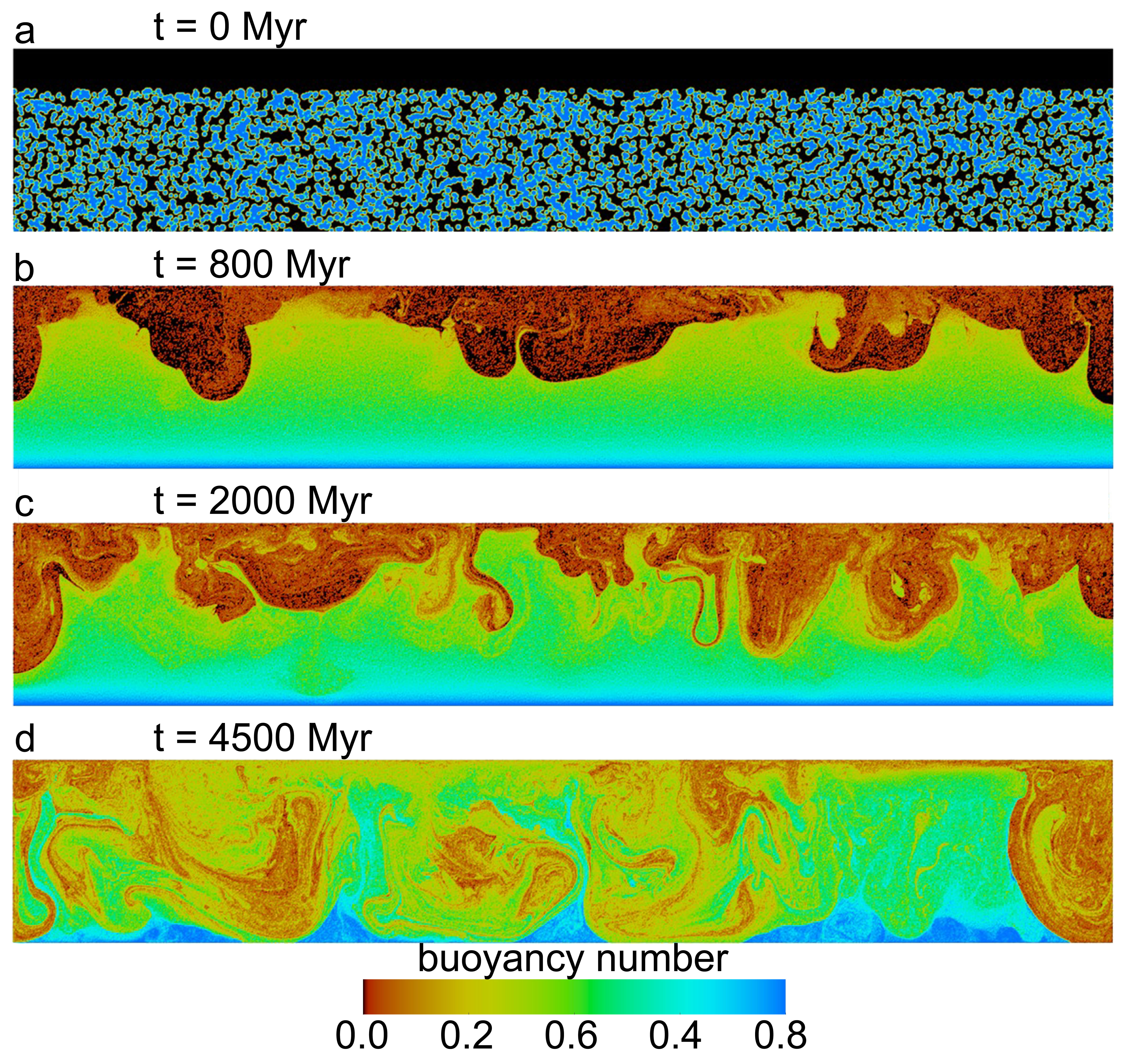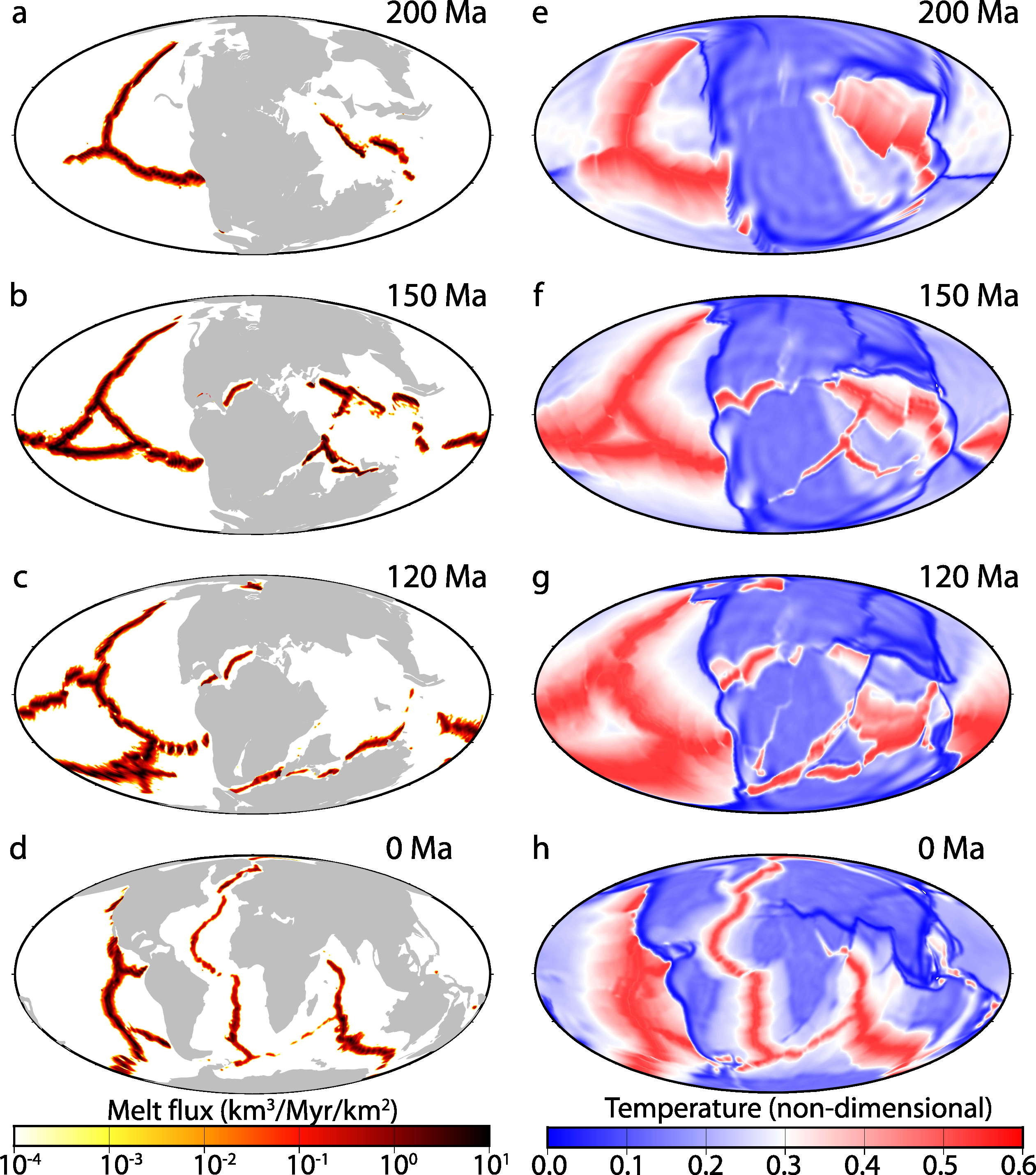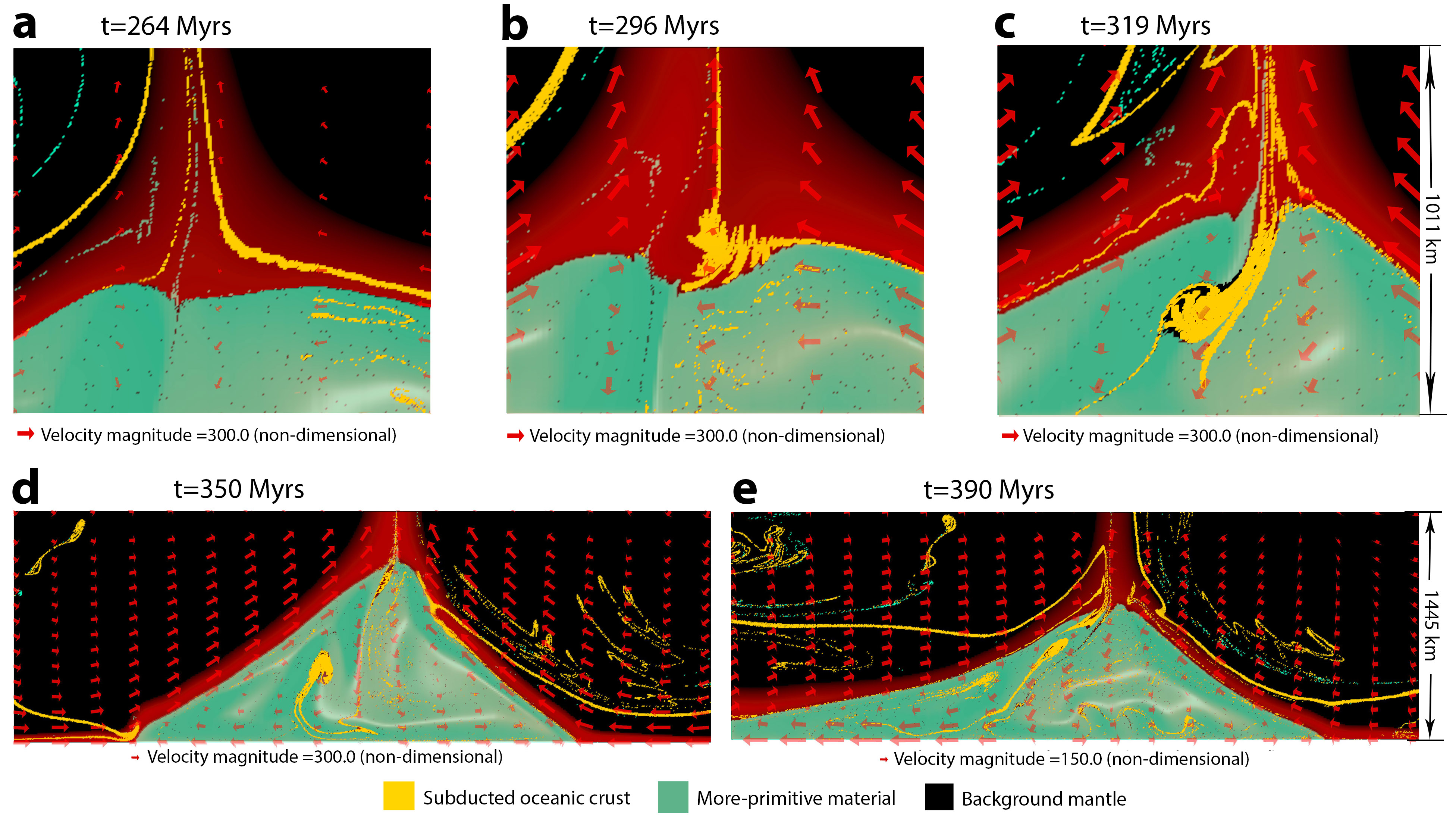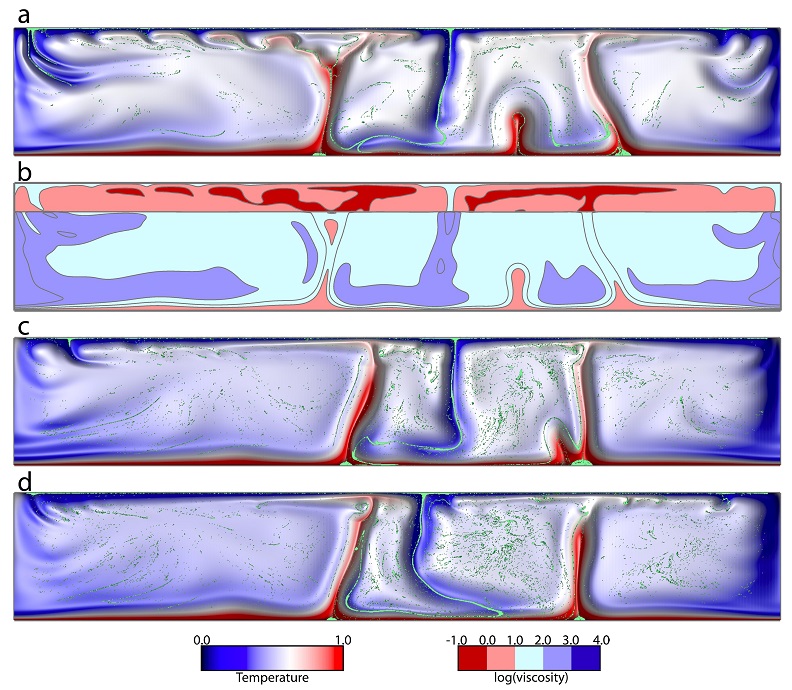
Working with mineral physicists, we find that redox of mineral affects density of lower mantle minerals. We find for similar composition, more oxidized material is less dense than more reduced material. This redox-induced density contrast can cause a rapid ascent and accumulation of oxidized material in the upper mantle, with descent of the denser reduced material to the core-mantle boundary. We suggest that the resulting heterogeneous redox conditions in Earth's interior can contribute to the large low-shear velocity provinces in the lower mantle and the evolution of atmospheric oxygen. Below is a figure of snapshots from geodynamical calculations showing the process of segregation between reduced and oxidized material caused by intrinsic density differences. Red and blue parts represent reduced and oxidized compositions, respectively.

I work with seismologists and mineral physicists to understand the seismic anisotropy in Earth's lowermost mantle. Below is a snapshot from geodynamic modeling, in which we use tracers to track the deformation of slabs. The deformation information is latter fed into mineral physics models to calculate seismic anisotropy. We find that observations of radial anisotropy and splitting in subhorizontal phases are mostly consistent with our models of post-perovskite with (010)-slip and (001)-slip. Our model of (001)-slip predicts stronger splitting than for (010)-slip for horizontally propagating phases in all directions. The strongest seismic anisotropy in this model occurs where the slab impinges on the core-mantle boundary.

The Earth's surface and deep mantle interacts. Here, we develop methods to quantify melt production and degassing rate from global 3D mantle convection models. With this method, we build up the bridge between deep mantle convection and surface volcanism. Our results show that melt production at mid-ocean ridges is mainly controlled by surface plate motion history, and that changes in plate tectonic motion, including plate reorganizations, may lead to significant deviation of melt production from the expected scaling with seafloor production rate. We also find a good correlation between melt production and degassing rate beneath mid-ocean ridges. The calculated global melt production and CO2 degassing rate at mid-ocean ridges varies by as much as a factor of 3 over the past 200 Myr. We show that mid-ocean ridge melt production and degassing rate would be much larger in the Cretaceous, and reached maximum values at ~150-120 Ma. Our results raise the possibility that warmer climate in the Cretaceous could be due in part to high magmatic productivity and correspondingly high outgassing rates at mid-ocean ridges during that time.

Below we show that as the oceanic crust is subducted to the lowermost mantle, it takes multiple pathways. Some oceanic crust is directly entrained into mantle plumes, but a significant fraction enters the primordial piles. As a result, plumes forming on top of piles entrain a variable combination of relatively young oceanic crust directly from the subducting slab, older oceanic crust that has been stirred with ancient more primitive material and background, depleted mantle. Cycling of oceanic crust through mantle reservoirs can therefore reconcile observations of different recycled oceanic crustal ages and explain the chemical complexity of hotspot lavas.

One hypothesis for the cause of LLSVPs is that they are thermochemical piles caused by accumulation of subducted oceanic crust at the CMB. However, although subducted oceanic crust is denser than its surroundings, it was unclear whether thin oceanic crust could provide enough negative buoyancy to overcome viscous stresses that act to stir the crust into the mantle. Our results find that viscous forces caused by mantle plume regions are stronger than the negative buoyancy of subducted oceanic crust, so the crust is easily stirred into the background mantle. A small amount of crustal material may collect at the base of plumes, but it is sufficiently entrained away into the plume and does not accumulate into larger-scale thermochemical structures. Therefore, it is difficult for a thin subducted oceanic crust (~6 km) to accumulate into large piles at the CMB with the same size as LLSVPs.
